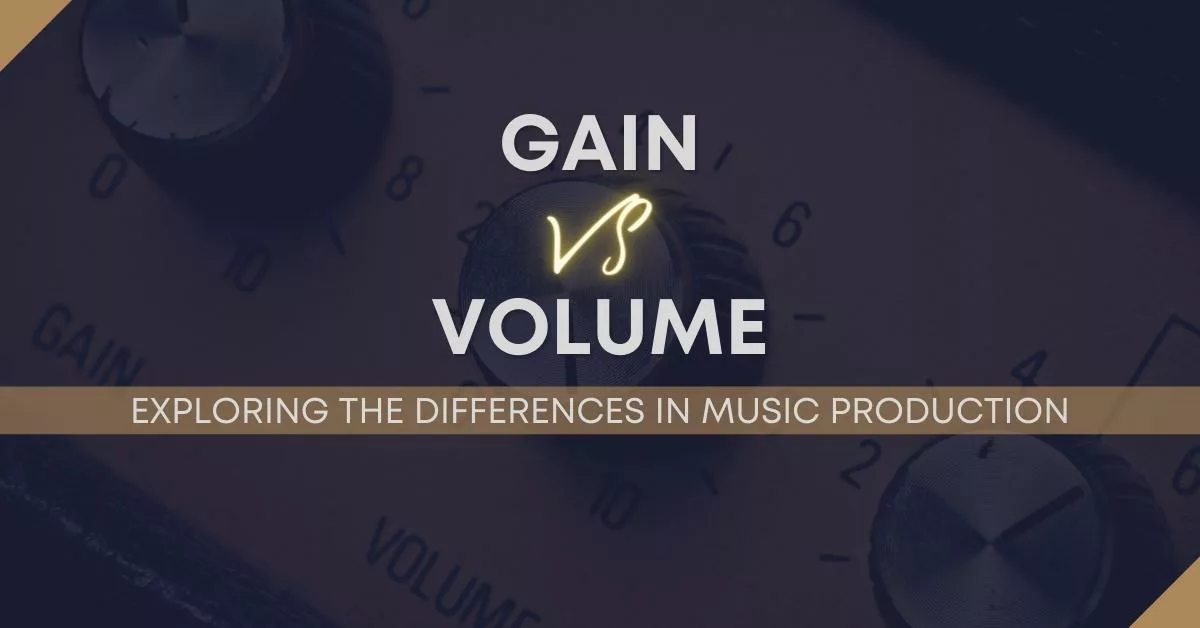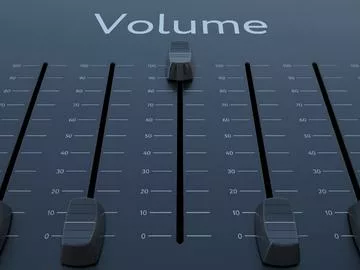
When it comes to music production and audio engineering, two terms that are frequently used are gain and volume. While these terms may seem interchangeable, they actually have distinct meanings and can affect sound and audio quality in different ways. In this blog post, we will explore the differences between gain and volume and the role they play in the world of audio.

Gain refers to the level of amplification of an audio signal. It measures the strength of the signal and is usually expressed in decibels (dB). The gain knob on an audio interface or mixer allows you to increase or decrease the level of the signal before it reaches the output stage.
The primary purpose of gain is to boost low-level signals such as a microphone or guitar pickup. If input level of the signal is too low, it can introduce noise and unwanted artifacts into the signal. Boosting the gain allows you to increase the level of the signal while maintaining a good signal-to-noise ratio.
The optimal gain level will depend on the type of instrument or microphone being used, as well as the recording environment. If the audio gain is set too high, the signal can become distorted, which can result in a harsh and unpleasant sound. Conversely, if the gain control is set too low, additional processing within the signal path will be required to bring it up to the desired level.
TIP: Gain should be adjusted at the source. The source level is the most important part in the gain stage. Also, utilize makeup gain on plugins such as compressors.

Volume refers to the perceived loudness of an audio signal. It is usually measured in decibels (dB) and is often adjusted using the volume control on an amplifier, speaker, or playback device. Volume controls the amplitude of the audio signal and can be used to make the sound louder or quieter.
Volume is subjective, meaning that what sounds loud to one person may not sound as loud to another. In addition, volume can be affected by a number of factors, including the frequency content of the signal, the audio system used for playback, and the listener’s hearing ability.
Volume is often used to adjust the overall loudness of a mix or track. This can be done during mixing or mastering to achieve a balanced and cohesive sound. It’s important to note that increasing the volume of a mix will also increase the perceived level of any noise or artifacts in the signal. Therefore, it’s essential to ensure that the mix is clean and free from unwanted noise before turning up the volume knob.
Related Article: What Is LUFS? A Guide To loudness And Mastering Music

While gain and volume are both responsible in affecting audio quality, they have different functions and can impact sound in different ways. Gain is used to boost the level of a low-level signal, while volume is used to adjust the overall loudness of a mix or track. Gain is adjusted at the source, while volume is adjusted at the output stage.
Another key difference between gain and volume is that gain affects the quality of the signal, while volume affects the perceived loudness. Increasing the gain can introduce noise and distortion into the signal, while increasing the volume can increase the perceived loudness of the mix or track.
In addition, gain and volume are often controlled using different equipment. Gain is typically controlled using an audio interface, mixer, or preamp, while volume is controlled using an amplifier, speaker, or playback device.
Here are 5 tips for using gain and volume in your music production:
Adjust gain at the source: When recording, adjust the gain level at the source to ensure that the signal chain is clean and free from unwanted noise and distortion. Use headphones or monitors to listen for any unwanted noise or distortion. NOTE: In the digital audio world, having the signal peak around -10 dbfs is ideal.
Use reference tracks: Use reference tracks to compare your mix to, listening on different playback systems. Pay attention to the overall loudness and frequency content of the reference tracks and adjust your mix accordingly.
Don’t rely too heavily on volume: While increasing the volume can make your music sound louder and more impactful, it will also increase the noise floor. Focus on achieving a balanced mix before increasing the volume in the mastering stage.
Use compression: Use compression to even out the dynamics of your mix and to control the overall loudness. Compression can help you achieve a more consistent and balanced sound, which can make it easier to increase the volume without introducing unwanted noise or artifacts.
Use a limiter: Use a limiter to prevent clipping and to achieve maximum loudness. A brickwall limiter is the final plugin or piece of hardware in the mastering chain.
Learn everything you need to know about gain staging.
Related Article: What Is Audio Normalization And Should You Normalize Your Tracks?
In conclusion, gain and volume are two important concepts to know in audio production. While they both affect the level of an audio signal, they have different functions and can impact sound quality in different ways. Gain is used to boost the level of a quiet signal, while volume is used to adjust the overall loudness of a mix or track.
Understanding the differences between gain and volume and how they impact your music production can help you achieve a better sound. By using gain to optimize the level of your source signals and using the output volume to adjust the overall loudness of your mix, you can ensure that your music sounds clean, balanced, and impactful.
Remember to adjust gain at the source, use reference tracks, and don’t rely too heavily on volume. Use compression and limiting to control the dynamics and loudness of your mix, and use a different sound system each time for testing. This will ensure that it translates correctly in a variety of situations.
By following these tips and understanding the differences between gain and volume, you can achieve a professional and polished sound in your music production.
"Some of the links within this article are affiliate links. These links are from various companies such as Amazon. This means if you click on any of these links and purchase the item or service, I will receive an affiliate commission. This is at no cost to you and the money gets invested back into Audio Sorcerer LLC."
Very informative post. I learned a lot from this post. Thank you for sharing!